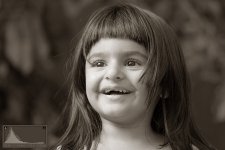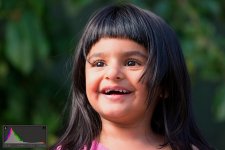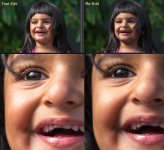Hello,
The following two photos are shot with a D7100 and a Sigma 105mm 2.8 Macro lens. I used a single SB-700 in an umbrella positioned at approx 45 degrees up and in front of my sister. A bit of post-processing has improved the photos but it's clear to me that my camera settings/exposure were not as they should be and some damage has been done. Here are the two photos unedited:
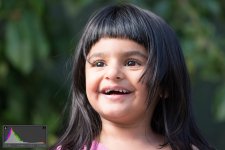

and here they are after some Lightroom editing:
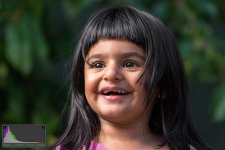

My sisters face looks over-exposed yet the histogram shows the overall image to be towards underexposure. Why is this? Did I position the flashed umbrella too close to my sister/use too much flash power? I'm not sure what happened here and because I'm still learning, I'd like to hear from the experts I would be glad to send the DNG file if you'd like to have a play around with the image for the purpose of this thread.
I would be glad to send the DNG file if you'd like to have a play around with the image for the purpose of this thread.
Thanks
The following two photos are shot with a D7100 and a Sigma 105mm 2.8 Macro lens. I used a single SB-700 in an umbrella positioned at approx 45 degrees up and in front of my sister. A bit of post-processing has improved the photos but it's clear to me that my camera settings/exposure were not as they should be and some damage has been done. Here are the two photos unedited:


and here they are after some Lightroom editing:


My sisters face looks over-exposed yet the histogram shows the overall image to be towards underexposure. Why is this? Did I position the flashed umbrella too close to my sister/use too much flash power? I'm not sure what happened here and because I'm still learning, I'd like to hear from the experts
Thanks

